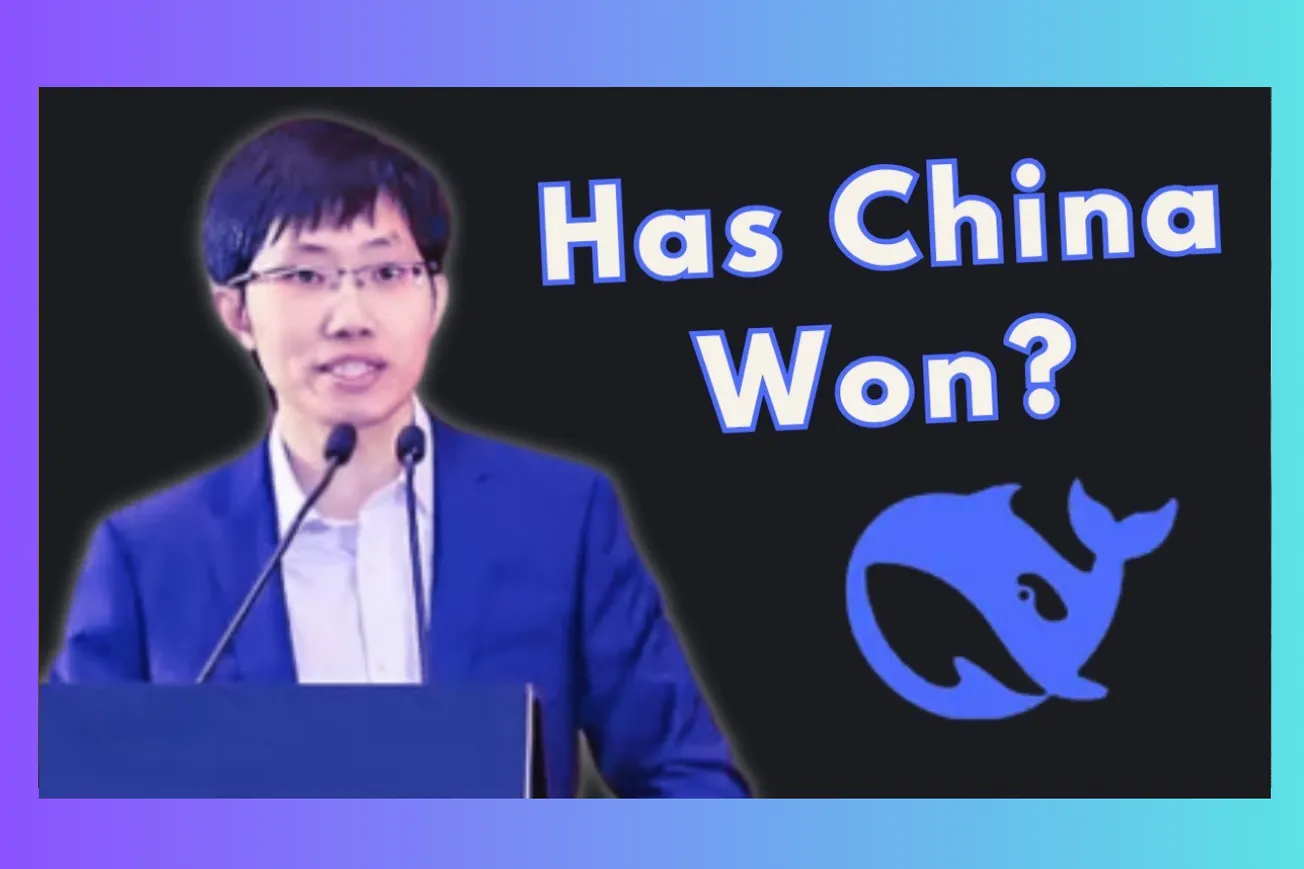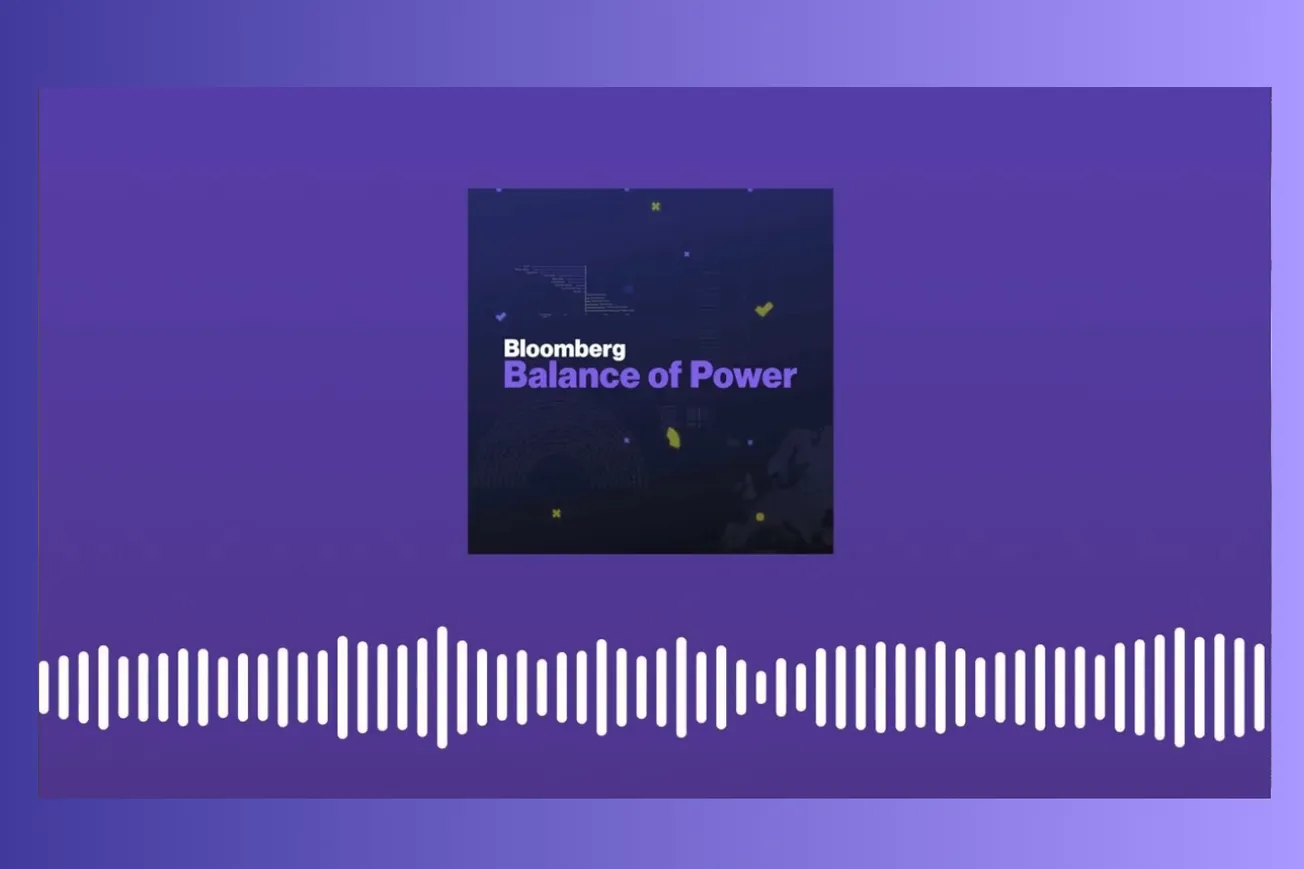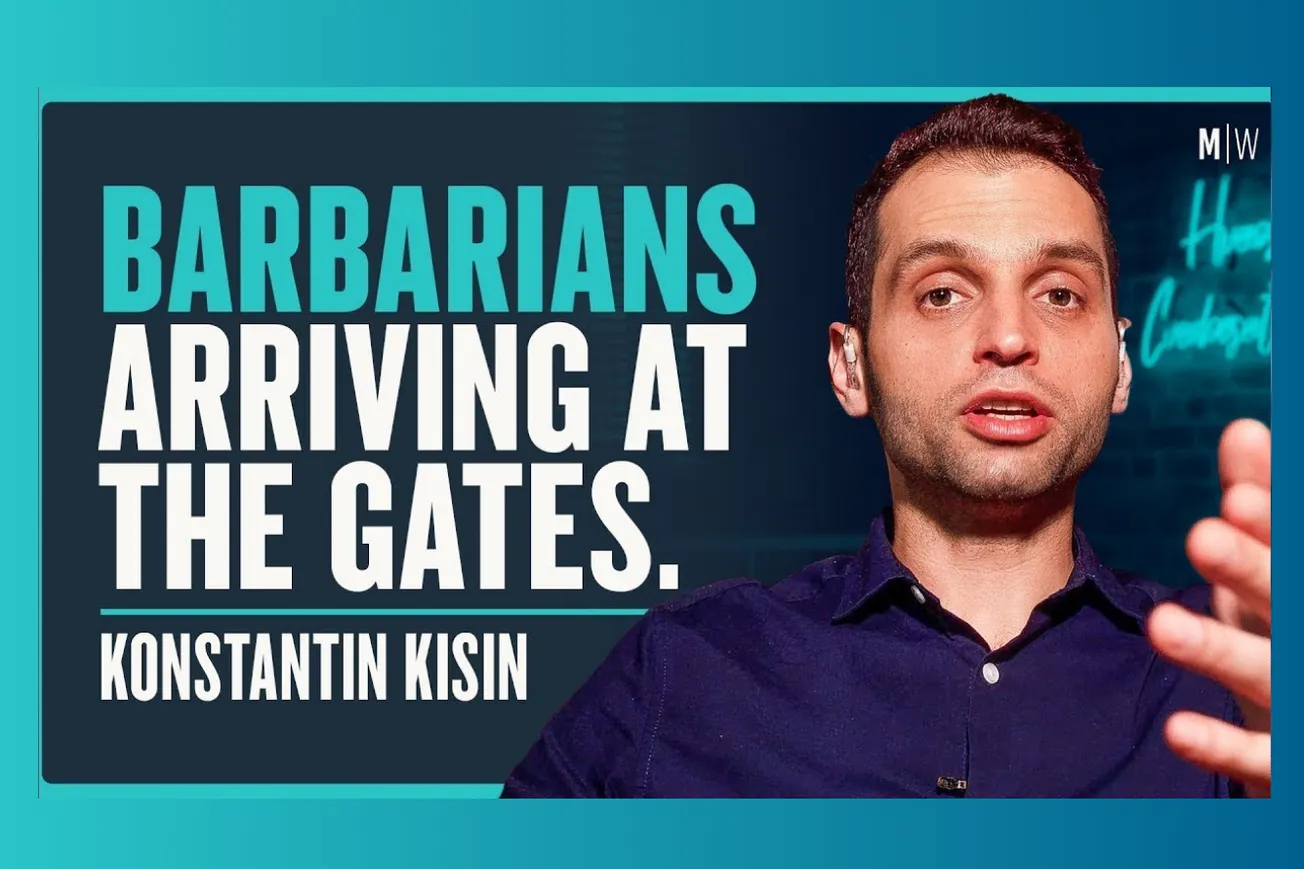Table of Contents
DeepSeek's breakthrough reveals how a small Chinese team with no commercial pressure created world-class AI by embracing open source values and rejecting traditional tech industry playbooks.
Key Takeaways
- DeepSeek operates more like a university research lab than a traditional tech company, with no revenue pressure or sales team
- The company's success stems from running their own data center since 2019, enabling deep hardware-software optimization below CUDA level
- Their hiring strategy favors young talent under 30 with minimal experience, believing decades of expertise can actually hinder AI innovation
- DeepSeek represents an "N of one" example that shouldn't be extrapolated into broader patterns about Chinese AI capabilities
- The team embodies tensions between open-source cosmopolitanism and Chinese technological nationalism
- Trump's surprisingly positive response suggests potential shifts in US export control strategy, though officials remain hawkish
- Open-source models can avoid censorship issues when deployed on third-party cloud infrastructure rather than Chinese servers
- DeepSeek's breakthrough highlights the global diffusion potential of AI innovation, regardless of geographic origin
- The company's government attention creates risks for their freewheeling research culture and open-source commitment
- Future success depends on maintaining independence from commercial pressures and state interference
The Accidental AI Lab: How DeepSeek Broke the Mold
DeepSeek isn't your typical tech company - it's what Kevin Xu calls "more of a university-like AI research lab" that accidentally stumbled into creating world-class artificial intelligence. The company's one-liner description captures everything that makes them unique: very capable, very affordable, and very open-sourced. But it's the fourth characteristic - their deeply idiosyncratic structure - that explains how they pulled off what most considered impossible.
The secret sauce isn't just technical brilliance, though there's plenty of that. It's the complete absence of commercial pressure. Unlike OpenAI, Anthropic, or the Chinese tech giants, DeepSeek has no revenue expectations, probably no sales team, and definitely no pressure to commercialize anything. Their API charges just enough to cover costs, maybe a bit above to recoup training expenses. This freedom allows the entire team to iterate quickly and improve their models based on the latest research without worrying about quarterly earnings or investor demands.
This setup flows naturally from their roots as a quantitative hedge fund. All quant funds run their own on-premise data centers to maximize trading algorithm speed and efficiency. That hardware-to-software expertise, accumulated since 2019 - before ChatGPT, before export controls - proved invaluable when applied to AI model training and deployment.
- DeepSeek operates without traditional commercial constraints that limit most AI companies
- Their quantitative trading background provided crucial infrastructure expertise
- The team can focus purely on research and development without revenue pressure
- This freedom enables rapid iteration based on cutting-edge open research
The technical achievements flow from this organizational freedom. DeepSeek engineers go layers below CUDA to fiddle with assembly language, squeezing maximum performance from their GPUs through software-hardware optimization that most companies can't afford to attempt. They've discovered a new paradigm of network bandwidth optimization and traffic load balancing that makes their models both extremely capable and remarkably affordable.
The Young Genius Problem: Why Experience Can Be a Hindrance
One of the most counterintuitive aspects of DeepSeek's success is their deliberate bias against experienced talent. CEO Liang Wenfeng articulates this philosophy clearly: "We need people who are extremely passionate about technology, not people who are used to using experience to find answers. Real innovation often comes from people who don't have baggage."
This isn't just theoretical - headhunters report that DeepSeek looks for people with three to five years of work experience at most. Any more than that, and you're generally passed over. This represents a dramatic departure from traditional Chinese tech hiring practices, where companies often won't hire anyone under 40, assuming they can't handle the intense work culture.
The parallel to early OpenAI is striking. Sam Altman famously had no idea how they'd make money in 2019, telling journalists "we'll figure it out at some point." OpenAI in 2020 had exactly 150 people - the same number of engineers DeepSeek currently employs. Both organizations discovered that in AI engineering today, having decades of experience can be as much hindrance as advantage when pushing the frontier of knowledge.
This isn't about dismissing experience entirely - it's about recognizing that we're in a paradigm shift where muscle memory from previous eras can actually slow down innovation. When you're exploring the unknown, having "baggage of experience, baggage of prestige, or baggage of previous accomplishment" can prevent the kind of radical experimentation that leads to breakthroughs.
- Young talent brings passion and willingness to try "random ideas" without fear of failure
- Traditional hiring practices in Chinese tech actually work against innovation in AI
- Paradigm shifts reward fresh thinking over accumulated expertise
- DeepSeek's approach mirrors successful Silicon Valley strategies from the early AI era
The organizational structure supports this philosophy. No KPIs, no hard hierarchical structures, no "bake-offs" between competing teams. Instead of internal competition that prevents collaboration, DeepSeek creates what feels like "a happy academic lab of young engineers just super psyched to create the future." This stands in stark contrast to the intense ROI pressure and organizational politics that characterize most large tech companies.
The Open Source Paradox: Global Values, National Pride
DeepSeek embodies fascinating tensions between cosmopolitan open-source values and Chinese technological nationalism. At its core, open source represents a borderless movement where code speaks for itself and community identity transcends nationality. Engineers from around the world collaborate based on technical interests - whether you're a C++ person or a Rust person, a Kubernetes enthusiast or an OpenStack advocate - rather than national affiliation.
But the Chinese open-source community carries something extra: what Kevin Xu describes as "open source zeal" or "open source calling." This manifests as engineers who are incredibly excited when Western firms, especially Silicon Valley companies, use their databases, microservices, or infrastructure packages. They'll provide free support, fix bugs in the middle of the night, and answer forum questions - all for validation and approval rather than monetary compensation.
This zeal reflects a deeper reality about how Chinese engineering is perceived globally. "Every time China comes up with something, it's usually labeled as oh they're cheating, they stole this," Xu observes. The open-source enthusiasm represents both engineering pride and a form of soft nationalism - proving to the world that Chinese technology can be used and loved by Western firms.
The tension becomes palpable when you examine CEO Liang's evolution in interviews. In 2023, he spoke primarily about humanitarian benefits and global contribution - classic open-source cosmopolitanism. By July 2024, the focus shifted toward demonstrating China's "hardcore innovation capability" to both domestic and international audiences. This wasn't just about building better AI; it was about proving Chinese engineers could push the frontier rather than just commercialize Western technology.
- Open source traditionally transcends national boundaries, but Chinese practitioners carry nationalistic motivations
- The desire for Western validation reflects broader perceptions about Chinese technological capabilities
- DeepSeek serves as both a global public good and a symbol of Chinese innovation prowess
- This dual identity creates inherent tensions about the company's ultimate purpose and direction
The recruitment element reinforces this dynamic. Liang's interviews always include recruiting pitches, emphasizing the freedom to explore and the pride of open-source contribution. For engineers tired of traditional Chinese tech companies' hierarchical structures and commercial pressures, DeepSeek offers something different: the chance to work on genuinely cutting-edge technology while contributing to global knowledge.
The Trump Response: Unexpected Pragmatism
Perhaps the most surprising development in the DeepSeek story has been President Trump's reaction. Rather than treating it as a national security threat, Trump's initial response sounded more like a Silicon Valley investor celebrating efficiency and competition. "I view that as a positive as an asset," he said, noting that if the technology is real, "you won't be spending as much and you'll get the same result."
This represents a fascinating departure from traditional Washington thinking about Chinese technological advancement. Instead of reflexively viewing Chinese innovation as a zero-sum threat, Trump framed it as a wake-up call for American industry: "The release of DeepSeek AI from a Chinese company should be a wake-up call for our industries that we need to be laser-focused on competing to win."
The speed with which DeepSeek made it into Trump's speeches is remarkable. This was a domestic Republican conference about tax cuts and immigration, yet Trump wove in commentary about Chinese AI development. Someone on his speechwriting team clearly understands the significance of what's happening - and as former Obama administration communications staffer Kevin Xu notes, "whoever wrote this, I am sure, is a ChinaTalk listener."
But the response isn't uniformly positive. Commerce Secretary nominee Howard Lutnick struck a much more traditional hawkish tone, claiming DeepSeek "was not done all above board" and promising to "be very strong" on export controls. The tension between Trump's pragmatic investor instincts and his administration's China hawks will likely define how this plays out.
- Trump's initial response emphasized competition and efficiency rather than security threats
- The administration contains competing voices on how to interpret Chinese AI advancement
- Rapid integration into presidential speeches suggests sophisticated understanding of the implications
- Export control policy remains uncertain as different factions advocate different approaches
This creates an interesting dynamic where Trump's "tough love" message to American industry - essentially "put up or shut up" - conflicts with calls for tighter restrictions on Chinese access to American technology. The question becomes whether the administration sees DeepSeek as validation that export controls don't work, or as evidence they need to be tightened further.
The Censorship Red Herring: Why Open Source Changes Everything
Much of the American discussion about DeepSeek has focused on censorship concerns - the fact that asking about Tiananmen Square or Xi Jinping yields sanitized responses. But this analysis misses crucial technical details about how open-source models actually work in practice.
The censorship behavior varies dramatically depending on where and how you deploy the model. If you download DeepSeek and run it locally using Ollama, the behavior differs significantly from using their official chatbot on deepseek.com. The censoring happens more in the cloud layer and business logic that prevents the chatbot from saying things that could get the company in trouble, rather than being baked irreversibly into the model itself.
This becomes clear when you see how third-party deployments work. Perplexity, the AI search startup, now offers DeepSeek deployment on their US cloud servers, promising no censorship while leveraging the best open-source model available. Microsoft Azure has fully embraced DeepSeek, making it one of their first-party models that users can click and deploy directly.
The business implications matter more than the political ones. Most companies want AI for summarizing customer scripts, helping salespeople be more efficient, or processing internal knowledge bases. For these use cases, the political censorship characteristics are completely irrelevant, while the cost structure is crucial. OpenAI's $200-per-month Pro subscription doesn't last long when you're processing enterprise workloads at scale.
- Open-source models behave differently depending on deployment environment
- Censorship occurs primarily in cloud layers rather than core model training
- Business use cases rarely intersect with politically sensitive topics
- Cost efficiency matters more than political characteristics for most enterprise applications
This explains why Microsoft isn't worried about Chinese censorship in DeepSeek. When deployed on Western cloud infrastructure for business applications, the political restrictions disappear while the technical capabilities remain. It's a validation of Meta's long-term open-source strategy with Llama - eroding the closed-source moats that OpenAI and Anthropic have built to protect their business models.
The Hardware Ecosystem Challenge: Beyond Individual Models
While much attention focuses on DeepSeek's software achievements, the broader hardware ecosystem implications may prove more significant for US-China technological competition. DeepSeek's ability to optimize performance at levels below CUDA represents exactly the kind of low-level engineering that could help Chinese hardware become more competitive.
The challenge isn't just about individual AI chips like Huawei's Ascend 910B. It's about the entire software ecosystem that makes hardware usable. CUDA's dominance creates what Kevin Xu calls "the American moat" - even when Chinese hardware offers better raw performance, developers stick with NVIDIA because the software tooling is superior.
DeepSeek's engineers have demonstrated they can "go below CUDA to really maximize the crap out of their NVIDIA GPUs." This level of optimization expertise could potentially transfer to Chinese hardware platforms, helping to build the software ecosystem that makes alternatives to NVIDIA viable. While Huawei has promoted their own CUDA equivalent and worked closely with PyTorch, developer adoption remains limited by software ecosystem constraints.
The risk isn't immediate hardware substitution - Huawei's limitations come from manufacturing restrictions rather than design capabilities. But over time, software optimization expertise could erode CUDA's dominance in ways that pure hardware improvements cannot. This represents a more subtle but potentially more significant challenge to American technological leadership.
- Low-level optimization skills could help Chinese hardware ecosystems become more competitive
- CUDA dominance protects NVIDIA beyond pure hardware performance advantages
- Software ecosystem development may prove more important than individual chip capabilities
- DeepSeek's optimization expertise could transfer to Chinese hardware platforms
Export controls have successfully limited Chinese access to cutting-edge chips, but they may be less effective against software innovation that maximizes existing hardware capabilities. This creates interesting questions about whether restrictions should focus more on software tools and optimization techniques rather than just hardware components.
The Government Attention Dilemma: Success Brings Scrutiny
DeepSeek's breakthrough has attracted exactly the kind of government attention that could undermine what makes them special. CEO Liang recently appeared as the only AI representative in a high-level government work report session - the kind of setting where industry leaders brief top officials about their sectors and needs.
From one perspective, this attention could help. Liang reportedly used the opportunity to advocate for more chip access, explaining how export controls constrain their research. Having direct access to top leadership could theoretically translate into better resource allocation or policy support.
But government attention also brings risks that could destroy DeepSeek's unique culture. The company currently operates with complete freedom from commercial pressures, no KPIs, and minimal organizational structure. Increased state scrutiny could introduce party cells, bureaucratic oversight, and pressure to align research priorities with national goals rather than pure scientific curiosity.
The longer-term question involves what happens when AI models become genuinely powerful. Right now, these systems can write poetry and help book restaurants, but they can't hack hospital systems or access classified information. As capabilities increase, the Chinese government may become less comfortable with firms pushing the frontier while open-sourcing everything to the world.
- Government attention could provide resources but threatens organizational independence
- Current success depends on freedom from bureaucratic constraints and political oversight
- Increased capabilities may trigger state concerns about open-source security implications
- The unique culture that enabled success could be destroyed by excessive attention
The precedent of other Chinese tech companies suggests caution. Firms that attract too much government attention often find themselves constrained by new regulations, oversight requirements, and pressure to serve state priorities rather than pursue independent research goals. DeepSeek's challenge will be maintaining the autonomy that made them successful while navigating increased political attention.
The Talent Exodus Risk: Fame Changes Everything
Success brings its own problems, particularly in talent retention. DeepSeek is already experiencing what every successful AI lab faces: key researchers getting poached by companies with deeper pockets and different priorities. One of the key authors of the DeepSeek V3 development recently left for Xiaomi to lead their AI division.
This mirrors the pattern seen at OpenAI, where early researchers who joined as passionate 25-year-olds eventually moved on as they entered their thirties and priorities shifted. The question isn't whether this will happen to DeepSeek - it's already happening - but whether they can maintain their culture and capabilities through the transition.
The attention creates additional complications. Media coverage, government meetings, and international recognition all change the dynamic for both current employees and potential recruits. What started as a quiet research lab focused purely on technical advancement now operates under global scrutiny with implications for US-China relations.
Xiaomi's recruitment of DeepSeek talent represents another interesting development. The smartphone and EV company has been "making a lot of noise" about AI integration, and acquiring proven talent from the most successful Chinese AI lab makes strategic sense. This could accelerate AI diffusion throughout the Chinese tech ecosystem, even as it potentially weakens DeepSeek's core team.
- Talent poaching accelerates as DeepSeek's success becomes widely recognized
- Key researchers face competing offers from companies with different priorities and deeper pockets
- Media attention and political scrutiny change the working environment for current staff
- Success paradoxically threatens the intimate research culture that enabled breakthrough achievements
The challenge extends beyond individual departures to maintaining the institutional culture that made DeepSeek special. As the team grows, as attention increases, and as commercial and political pressures mount, preserving the "happy academic lab" atmosphere becomes increasingly difficult.
Export Controls at the Crossroads: Validation or Vindication?
DeepSeek's emergence has triggered intense debate about the effectiveness of US export controls on AI technology. The company's achievements using older, legally obtained NVIDIA chips raises questions about whether restrictions are working as intended or need fundamental reconsideration.
From one perspective, export controls have clearly succeeded in their primary goal: keeping Chinese AI development behind the frontier. Without access to the latest H100 and H200 chips, Chinese companies have had to develop more efficient techniques and make better use of available hardware. This represents exactly the kind of constraint that export controls were designed to create.
But DeepSeek's breakthrough complicates this narrative. If a small team can achieve near-state-of-the-art results using restricted hardware and innovative software techniques, it suggests that chip restrictions alone may not provide the security benefits that policymakers expected. The "small yard, high fence" strategy assumes that controlling key hardware components can maintain American advantages, but software innovation may prove more adaptable than anticipated.
The policy response remains uncertain. Commerce Secretary nominee Lutnick advocates tightening restrictions further, arguing that DeepSeek's success proves Chinese companies are circumventing existing controls through improper means. But Trump's more pragmatic response suggests potential openness to different approaches that emphasize competition rather than restriction.
- Export controls have successfully constrained Chinese access to cutting-edge hardware
- Software optimization techniques may reduce the effectiveness of hardware-focused restrictions
- Policy makers face competing interpretations of what DeepSeek's success means for export control strategy
- The administration contains voices advocating both tighter restrictions and more open competition
The fundamental question becomes whether the US should focus on maintaining technological advantages through restrictions, or whether it should embrace competition while protecting truly sensitive capabilities. DeepSeek's achievement suggests that talented engineers with sufficient resources can find ways around hardware limitations, making the case for focusing restrictions on the most critical technologies while allowing broader competition in commercial applications.
The Third Path: Disaggregating AI Competition
The DeepSeek breakthrough highlights the need for more nuanced thinking about AI competition beyond simple US-versus-China framing. As Kevin Xu suggests, the key may be disaggregating different use cases and understanding which require competitive protection versus which benefit from global collaboration.
Military applications represent obvious areas of legitimate competition where national advantage matters genuinely. Drone swarms, autonomous weapons systems, and cyber warfare capabilities clearly fall into domains where technological edges translate directly into security advantages. In these areas, export controls and competitive restrictions make strategic sense.
But other applications - business productivity, healthcare research, scientific advancement - may benefit more from open collaboration than zero-sum competition. The Stargate announcement of $500 billion in AI infrastructure investment was justified primarily through healthcare benefits like cancer research, not military applications. Yet the underlying assumption remains that only Western-developed AI can be trusted with such crucial tasks.
Open source complicates this binary thinking by making technology diffusion almost inevitable. If DeepSeek or other Chinese labs continue producing world-class open-source models, the benefits will spread globally regardless of export control policies. The question becomes how to maximize positive applications while minimizing negative ones, rather than trying to maintain exclusive control over the technology itself.
- Different AI applications require different approaches to competition and collaboration
- Military uses clearly warrant competitive restrictions, while healthcare applications may benefit from global cooperation
- Open source makes technology diffusion difficult to control through traditional policy tools
- The challenge involves maximizing benefits while minimizing risks rather than maintaining exclusive technological control
Anthropic's approach to model releases offers one example of middle-ground thinking. They work with government nuclear review commissions to red-team new models, ensuring they don't accidentally leak harmful information to non-state actors or terrorist organizations. This represents practical AI safety focused on preventing catastrophic risks rather than maintaining competitive advantages.
The Global Diffusion Reality: Talent Knows No Borders
DeepSeek's success illustrates a fundamental reality about modern technological development: talent is globally distributed and innovation can emerge from unexpected places. The team is entirely composed of engineers trained at Chinese universities, some with brief stints at foreign companies but none with extensive Silicon Valley experience. This contradicts assumptions about where breakthrough AI research can originate.
The broader implications extend beyond any single company or country. If a small team in China can achieve world-class results, similar breakthroughs could emerge from research labs in India, Israel, Europe, or anywhere else with sufficient talent and resources. The era of assuming that cutting-edge AI development requires Silicon Valley pedigree is clearly ending.
This global distribution of capability creates both opportunities and challenges for US technological leadership. On the positive side, open collaboration and talent exchange have historically accelerated American innovation. Many of the key figures in Silicon Valley's success story came from other countries, bringing diverse perspectives and approaches that strengthened the overall ecosystem.
But it also means that maintaining technological advantages through exclusion becomes increasingly difficult. When talent is globally distributed and communication is instant, innovative ideas spread rapidly regardless of geographic or political boundaries. The choice becomes whether to embrace this reality and compete on execution, or attempt to maintain advantages through restrictions that may prove ultimately ineffective.
- Breakthrough AI research can emerge from diverse global talent pools
- Silicon Valley pedigree is no longer a prerequisite for cutting-edge innovation
- Global talent distribution accelerates innovation diffusion regardless of policy restrictions
- The US faces choices about whether to compete through inclusion or exclusion strategies
The DeepSeek story suggests that embracing competition while protecting truly sensitive capabilities may prove more effective than attempting to maintain broad technological monopolies. As Trump noted in his pragmatic moments, if Chinese efficiency forces American companies to innovate faster and more cost-effectively, that could benefit everyone involved.
Conclusion: The Future Shaped by Open Innovation
DeepSeek represents something genuinely new in the global AI landscape: a research organization that succeeded by rejecting conventional wisdom about commercialization, hierarchy, and competitive secrecy. Their breakthrough demonstrates that with the right organizational culture, sufficient resources, and freedom to experiment, small teams can compete with the largest tech companies in the world.
The broader implications extend far beyond any single model or company. DeepSeek proves that innovation in AI doesn't require Silicon Valley connections, massive venture funding, or traditional corporate structures. It can emerge from anywhere that talented people have the freedom to pursue their curiosity without excessive commercial or political constraints.
For the United States, this creates both challenges and opportunities. The challenge involves adapting to a world where technological leadership requires constant innovation rather than relying on structural advantages like exclusive access to talent or resources. The opportunity lies in embracing this competitive dynamic to drive faster progress across all applications of AI technology.
The open-source dimension adds another layer of complexity and promise. When breakthrough innovations are shared freely, they benefit researchers and developers globally, accelerating progress on challenges that affect everyone. The key question becomes how to harness this collaborative potential while managing legitimate security concerns about military and dual-use applications.
What's Next: Navigating the New AI Landscape
- Organizational innovation will matter more than pure technical capability - Companies that can combine talent freedom with resource access will outperform traditional hierarchical structures
- Open source will drive AI diffusion regardless of government policies - Breakthrough models will spread globally, making containment strategies less effective than competitive strategies
- Age and experience hierarchies will continue breaking down - Young talent with passion will often outperform seasoned experts trapped in outdated paradigms
- Government attention will create new pressures on successful AI labs - Balancing state support with research independence will become crucial for maintaining innovation cultures
- Export controls will evolve toward more targeted approaches - Broad hardware restrictions may give way to more specific protections for critical applications
- The US-China AI relationship will become more nuanced - Simple competition narratives will yield to complex dynamics involving both rivalry and inadvertent cooperation
- Global talent mobility will accelerate innovation diffusion - Breakthrough ideas will spread rapidly regardless of their geographic origin
- Cost efficiency will become as important as raw capability - DeepSeek's affordability advantages will force expensive closed-source models to justify their premium pricing
- Hardware optimization will matter more than pure chip access - Software innovation may prove more important than cutting-edge silicon for many applications
- Open collaboration on benign applications will coexist with competition on military uses - Different AI domains will require different approaches to international cooperation and competition
The DeepSeek moment represents more than just another AI breakthrough - it signals a fundamental shift toward more distributed, more open, and more globally competitive innovation in artificial intelligence. How governments and companies adapt to this new reality will determine whether it leads to accelerated progress for humanity or destructive zero-sum competition that slows beneficial development.





